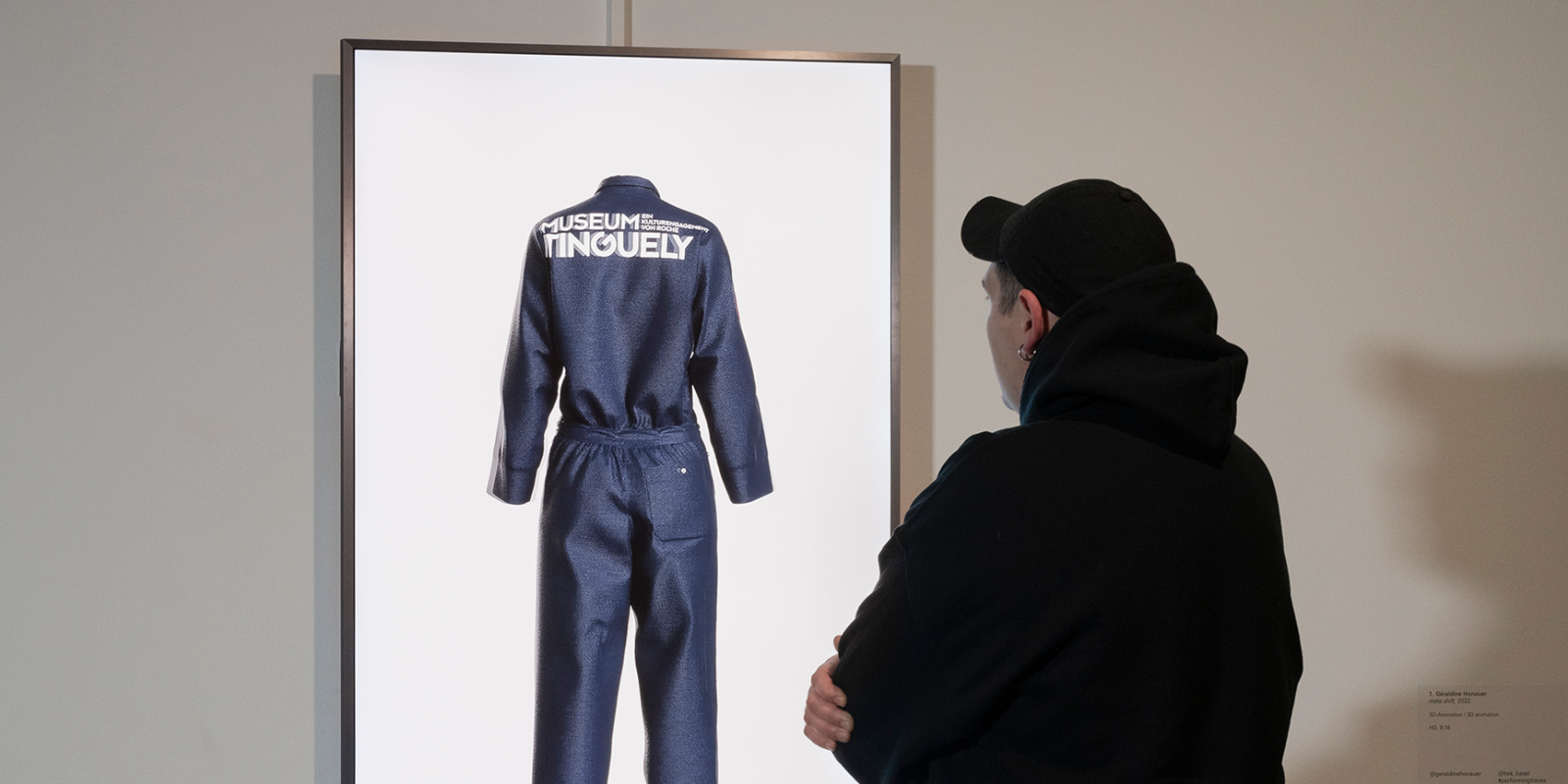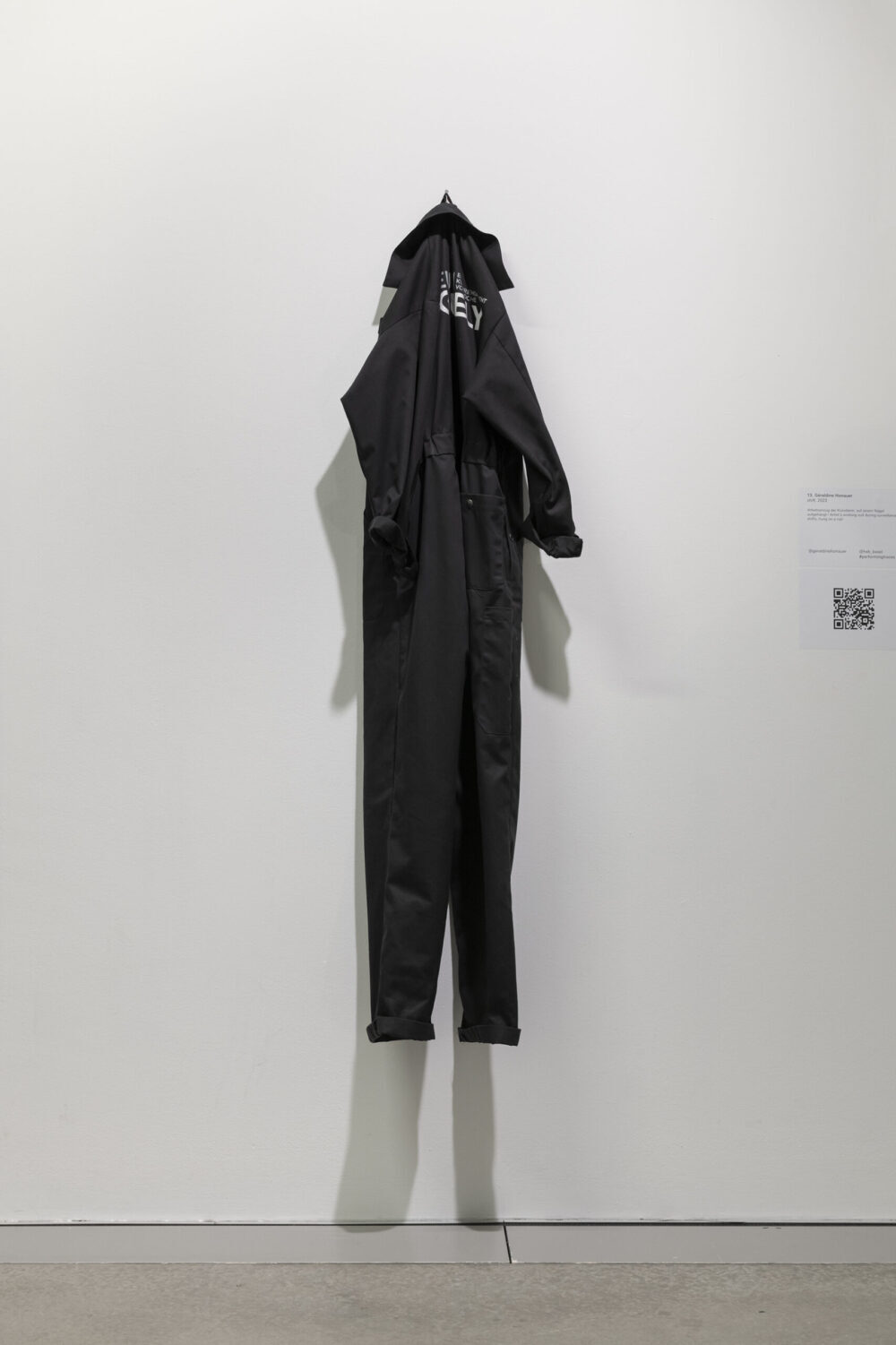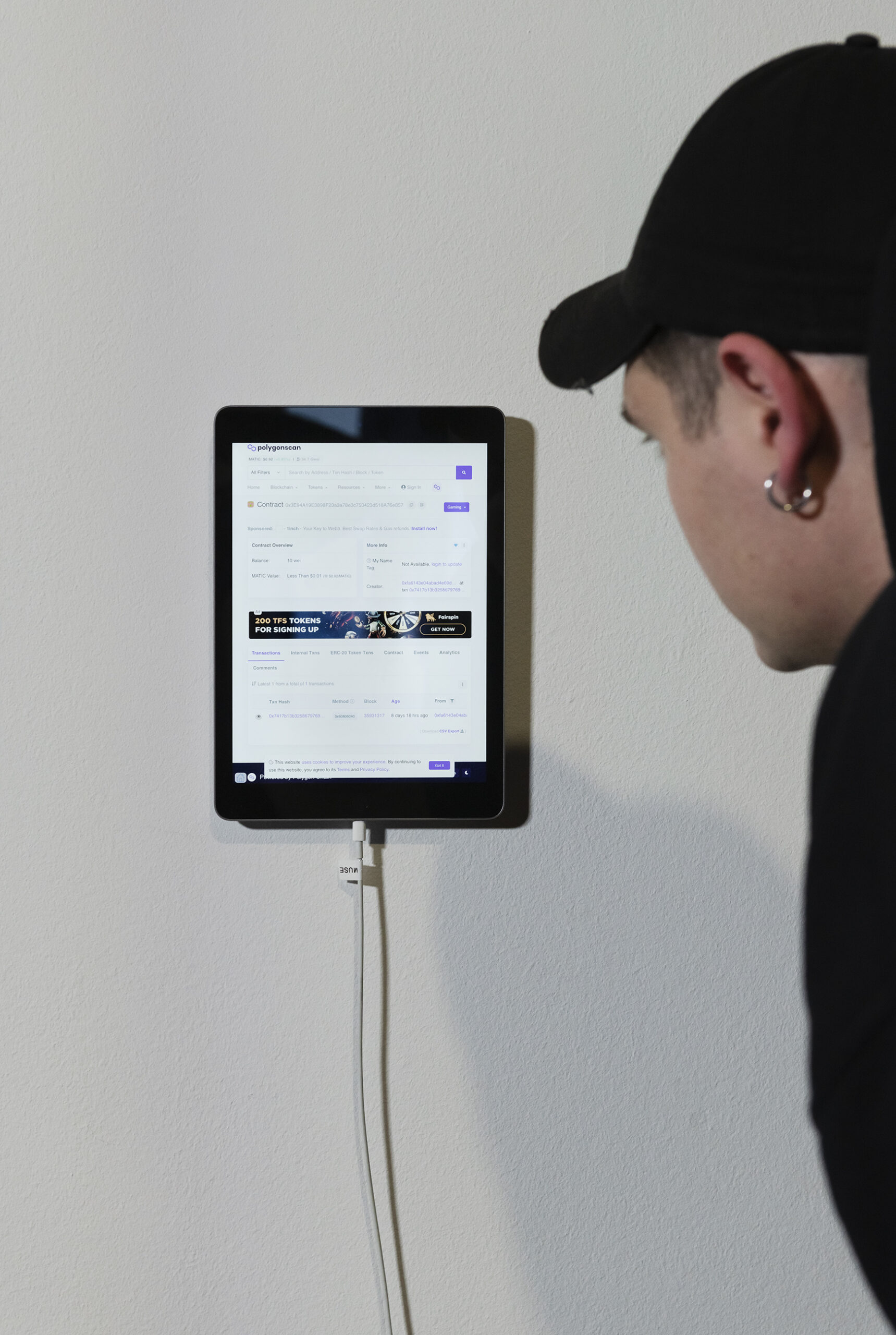Géraldine Honauer on Artist Fees, Blockchain and the Future of Documentation

Boris Magrini – Your participation in HEK’s Regionale exhibition – Performing Traces – shows several works that all thematise the question of the artist’s salary. For example, you have created an edition of five special ‘HEK-Schein & Dinner’ tickets, in the format of NFTs – these are therefore purchasable with cryptocurrencies. These tickets grant free entry into the exhibition and additionally are an invitation to a dinner you will organise and to which you will invite the HEK team and all the exhibited artists. The ticket/NFT is expensive, it costs 2400 CHF, but it is above all financial support for the artists as half of the income from their sale will be shared between all 12 artists in the exhibition. Can you explain your motivation for creating this edition?
Géraldine Honauer – The Regionale is a cross-border exhibition that annually showcases approximately 350 artists in 18 institutions since 2000. It is very important for every artist to have the opportunity to showcase their work in such institutions. The event is an enrichment and a meeting place for the local culture scene. However, it is unfortunately also important to mention that to date, the work that artists contribute to the exhibition is mostly only compensated with visibility. This is constantly being addressed and efforts are being made to change the situation, so that this year the Regionale organisation has collected a symbolic honorarium of 70 CHF for each artists, which is already an incredible achievement.
According to the recommendations of the “Guidelines for Compensation of Services Provided by Visual Artists,” published by Visarte in 2016, everyone should be compensated for participating in an exhibition. Honoraria should be paid for the conception, implementation and execution of exhibitions. Additionally compensation should also be given for commissioned works such as installations or project-specific works, availability of existing works, appearances and performances, as well as services in connection with an exhibition.
Therefore, for the artists participating in the Regionale, a budget of 175,000 CHF would be required, which would award a honorarium of 500 CHF per artist. I wondered who could pay for this or what kind of systems we as artists could come up with ourselves. My edition may also be intended to raise questions about the value of art and its relationship to traditional forms of currency, as well as to explore the theme of the artist’s salary and the ways in which it can be supported.
If the edition of 5 tickets was sold, each exhibiting artist at HEK would receive a total of 500 CHF. In addition, a dinner event will be organised in which a gourmet chef will accompany the gathering of invited guests for the evening. This would include all the participating artists of the exhibition Performing Traces – Regionale 23 at HEK, the exhibition team, and three guests of each edition holder. What more could you want for an artwork costing 2400 CHF that you will own as a physical souvenir and as a NFT Certificate?
BM – You also created a so-called splitter contract, which allows you to receive donations on a specific wallet created on the polygon blockchain and which automatically equally redistributes the donated amount to the 12 artists of the Performing Traces – Regionale 23 exhibition. Clearly, the motivations behind this work are the same as those that led you to create the ‘HEK-Schein & Dinner’ ticket. However, you could have established this kind of support using traditional payment methods (fiat money). What inspired you to work with blockchains and cryptocurrencies?
GH -Blockchain technology is about a transparent accounting technology where every transaction is visibly shown and cannot be deleted or changed afterwards. Additionally, the use of NFTs as a way of creating a record of the transactions and the description of it remains as a souvenir of the dinner experience. The donation can highlight the role of technology and digital media but also explores and proposes a technology that I actually use to archive the transaction of my performative ready mades in the exhibition. I also plan in the future to provide assets of my artwork to archive them in a sort of meta-space. So the use of blockchains and cryptocurrencies is more about the question of what will be the future of documentation and how do we feel about physical objects or experiences. Can we combine this in an interesting way to create moments of sharing and participation?
In designing the splitter contract and the ‘HEK-Schein & Dinner’ ticket , I asked myself how I can create a moment of sharing, participation and attendance that can then be archived as a certificate and souvenir. This is how I have used the blockchain as a technology – trace it or it didn’t happen. For the creation of the smart splitter contract and the accompanying work flow I had great support from a young start up in Zurich called “nobank”.

Géraldine Honauer, shift, 2022 at HEK as part of «Performing Traces – Regionale 23». Photo by Franz Wamhof.
BM – In the exhibition you also show the uniform you wear while working as an exhibition guard at the Museum Tinguely. During the course of the exhibition you pick up the outfit at HEK before your shifts at the museum, and then bring it back to HEK. In addition you have created a 3D model of the outfit that can be used for avatars in metaverses. This is also a conceptual and performative work, you thematise the question of the artist’s salary again and point out that young artists like yourself are often forced to do side jobs because they do not receive a sufficient salary to live on. How is it possible, in your opinion, to change this and encourage institutions to better support the work of artists?
GH – I think we artists should learn how to sell our work. It is not really about selling an artwork but rather promoting the idea of being an artist as a profession. Like all other professions, remembering that we are selling our service. The artwork is one thing, but the main point is the research behind it. I think the title of ‘systems analyst’ would be more appropriate as definition of my profession.
So, the 3D model of my working suit for a chosen metaverse follows the question of how can it be useful to consume fashion in a digital world. How can the metaverse have an impact on our physical life? But then it’s also about shifting roles: the collector becomes the performer and worker in the metaverse, just by walking around with this uniform.
I think the NFT is not only interesting for media art, it’s also a revival of concept art, because concepts can be deposited on the blockchain as certificates or use the blockchain as a medium. Performance, actions and installations can be archived like this. And the owner has a souvenir as a certificate that can be unique even if everyone can see it, its yours! The act becomes marketable!
It’s like a stamp collection or football trading cards. Until now, I have decided to play against the market, which means that many of my works escape the market value consciously. I know the rules of the game and I love to make the systems visible through my artworks.

Géraldine Honauer, Transaction traces, 2022 at HEK as part of «Performing Traces – Regionale 23». Photo by Franz Wamhof.
BM – You are very active in the art scene, not only as an artist but also as a curator. For instance, you curated a Regionale exhibition at the Kunsthaus Baselland with Ines Tondar and Ines Goldbach, and were active as a member/co-founder of various artist-run spaces such as Bleifrei Aarau, Palazzina in Basel and now part of Kunstraum Aarau. In your experience, how do local young artists view the question of salary, or lack thereof, while participating in such exhibitions? How do they cope with these difficulties?
GH – It is an issue for everyone, but we would all like to do our work. Unfortunately, I can only do one or the other, either I participate in a format like this, and exhibit works that address it, or I don’t participate in this format. I think everyone makes an assessment of how much one can still profit from it. It’s a pragmatism that also shows the prosperity or hardship of the current industry and we should be aware of it when we visit these incredible exhibitions.
It’s nice to see how artist run spaces in Basel have popped up like mushrooms in the last 2 years, I see a great commitment by artists for artists. Such commitment is also really important for local artists.
In this sense, a heartfelt thank you to all cultural actors in Basel and the region for enabling such important platforms for regional artists. And who knows, maybe we can all come up with an idea for the next regional festival on how to get 175,000 CHF or to figure out who should be responsible for it…
Thank you to Géraldine Honauer for her contributions to the Performing Traces – Regionale 23 exhibition and for sharing her thoughts in this interview. If you are interested in purchasing a ‘HEK-Schein & Dinner’ please visit our website or get in touch via email, office@hek.ch.
For those who haven’t visited yet, the exhibition is on until the 1st of January 2023. We are open during the winter break as per usual from 12:00 until 18:00, Wednesday to Sunday.